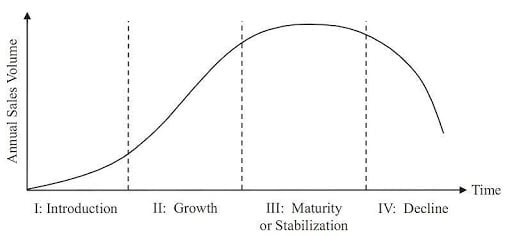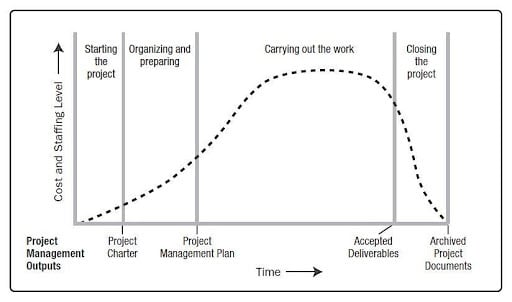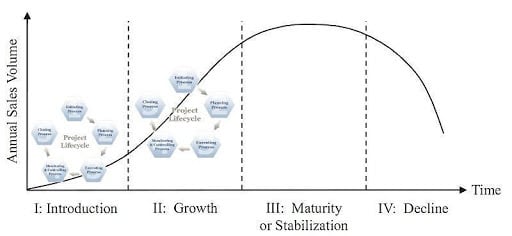Product Manager vs Project Manager vs Project Leader: Key differences you must know
Terms like product manager, project manager, and project leader are well heard in organizations. But, they are often confused by most of the people by responsibilities. What people struggle to answer is: are there any distinctions between these roles? If yes, what are the differences?
If you are one of those people who juggle these terms, then reading this article can be useful to you. Though all three relate and collaborate with each other, they have different responsibilities. In some of the organizations, all the three roles exist. While in others one role may take up the responsibilities of other roles. For example, an organization can have a product manager with the responsibilities of project manager as well. A project manager takes the responsibility of a project leader. Some organizations, use these terms. For example, a project leader is actually a project manager in some organizations.
But, nonetheless, these three roles differ in their responsibilities. Having a good understanding of their responsibilities and limitations reduces the chances of conflicts. Hence, it’s imperative to understand the differences.
Understanding the Difference:
Product Manager, Project Manager, and Leader - Are They Different in Real?
Though some of the organizations have all three different roles, still the confusion persists about their work. What do they do? To better understand the difference, let us start with some basics to lay the foundation.
You may also like: Transformation from Project Leader to Project Manager
Product Vs Project:
Let us first understand the difference between a product and a project.
What is a Product?
A product is anything we produce to meet the needs and wants of its end users. It is something that we offer to meet their requirements. Products can be tangible items, non-tangible services or even computer software or applications. Organizations can have the variety of products in their product portfolio. Which they pitch to the market to cater to the needs of users. What products should be there in a portfolio is the organization's call based on the strategies?
What is a Project?
The project, on the other hand, is to create any unique product, service or result. Projects are temporary and have defined time boundaries. Hence, all projects are unique in nature and drive the change in the organization.
Projects run within the constraints of scope, time, budget and resources.
Having discussed the difference between product and project. We can now understand the product lifecycle and project life cycle before exploring the subject.
Let's understand the difference and similarities between the product lifecycle and project lifecycle:
Product Life Cycle:

Figure 1.1: Product Life Cycle
Image Source: https://commons.wikimedia.org
Any product undergoes through different phases of its life cycle. These phases are:
1. Conceptualization and Development
2. Introduction
3. Growth
4. Maturity
5. Decline
Sometimes, conceptualization and development are not considered as the part of a product life cycle. During conceptualization, a product is an idea. During development, a product is under design stage. In the introduction stage, it becomes live in the market, this is where the end users consume it. Post that is passes through the Growth Phase, where it captures market volume. In the maturity phase, it gains market stability. This turns into product decline from the market after some time during the decline phase of the cycle. This ends the current product life. (Refer to the figure 1.1)
Project Life Cycle:

Figure 1.2: Project life cycle
Image Source: https://cio-wiki.org/?page=project-life-cycle
The phases of a project life cycle include:
1. Starting the Project.
2. Organizing and Preparing
3. Carrying out the Work.
4. Closing the Project.
You may also like: Project Management: How to collect requirements for your project effectively?
A project life cycle passes through four phases in order. Figure 1.2 depicts the project flow through four phases. During starting the project phase, we assess project feasibility and prepare the charter is. During the second phase, we do planning and documentation. We carry out the real project work execution as per the project management plan during the third phase. At the end of this phase, we review project deliverables for their acceptance. Post this phase, we carry out formal project closure and archive the project documents for future references. Hence, any phase of a product life cycle may encompass one or more project cycles in it. (Refer to the figure 1.3).
For an example, during product development phase in a product lifecycle, one or many projects may be carried out to develop the product.

Figure 1.3: Relation between product lifecycle and project life cycle
Image Source: https://commons.wikimedia.org
Roles and Responsibilities of the Product Manager, Project Manager, and Project Leader:
Let us understand the roles and responsibilities of Product Manager, Project Manager, and Project Leader:
Roles:
Product Manager: They are often addressed as CEO of their products. In some organization, we call them Account Managers. They involve with the product throughout its life cycle. They should deliver the products that the customer would appreciate and accept. They take the onus of their products from its very origin. They involve in:
- Setting product strategy.
- Translating the product features.
- Promoting and improving their products.
- They envision the products and bring them to life through efforts.
Project Manager: They are the experts in project management principles. Certified project management professionals often serve as project managers. They engage in managing the projects. They take the onus of delivering projects end to end within the constraints of time, budget and resources. They are the executors of the product strategies set by the product manager. They are completely responsible throughout the project life cycle. They connect with the product managers to understand product features or requirements. They communicate these expectations to the project team.
Project Leader: They are responsible to lead the project work as the name suggests. They engage throughout the project life to lead the project team. They maintain the team dynamics. They never fail to show their leadership skills during a project, and they keep the team focus intact. They have team management and conflict resolution skills. In some of the organizations, where the functions take the projects, the functional heads delegate an individual to lead the project as a project leader. These project leaders work on ad – hoc basis on the projects.
You may also like: Roles and Responsibilities of the Project Manager & Project Management Team
Responsibilities:
Product Manager: As we know, product managers are the CEOs of their products. They are responsible for their products throughout product life. They generate the product idea and make efforts to turn this idea into reality. They are responsible for setting product strategy and communicating the same to relevant parties. They gather and understand the product requirements. And they set the goals to meet these requirements. They help explore new product features and analyze market demand for the same. To meet product strategy through projects, they remain in constant touch with project managers. Product managers show interest in their product as a project deliverable. They are also responsible for the product releases and promotions. The following are the typical responsibilities of a product manager:
- They are responsible for setting the product strategy.
- They generate product concepts and identify product requirements.
- They are responsible for product release.
- Their responsibilities include product introduction into the market and product promotion.
- They involve in product costing and concerned with profit/ loss due to their products.
- They are also responsible for the organizational training on their products.
- They are responsible for the wider span of product control.
Project Manager: Skilled professionals, who are experts in project management. Their main focus is to deliver the project as expected. They are least bothered about the complete product lifecycle. and only concerned about their project life cycle. They are good at delivering expected project outcomes as planned. For the projects related to product delivery, project managers understand the features and requirements of the product manager. Product managers set their expectations for the product. And project managers translate these expectations to the project team to act upon. They ensure the product delivery within stipulated time, as per cost estimated and within scope. Sometimes, project managers also engage with customers to understand their product requirements. The typical responsibilities of a project manager include the following:
- They are responsible to articulate the project plan to deliver project outcome as expected.
- They are responsible for managing triple constraints. – time, budget and scope, while working on a project.
- They are responsible for understanding the clear expectations for the project deliverable (product) and also ensure the team understands the same.
- Their responsibilities include tracking team progress, checking project performance and suggest appropriate actions.
- They also identify project risks and take suitable actions.
- Project managers manage the stakeholders and project resources during the project.
- Throughout the project life cycle, they update the project status to relevant project stakeholders.
Want to become a Successful Project Manager? Read on to find out!
Project Leader: Project leaders are more concerned about leading people during a project. Any project requires lots of resources including human resources. Human resources are toughest to manage. Project leaders manage the team dynamics throughout the projects. They ensure the focus of the team on project deliverable. Interested in project outcomes with their people, they show this interest to their team as well. They show this passion to walk the talk. They keep their team motivated. And they ensure the team gets its reward after a successful project delivery. The responsibilities of a project leader include the following:
- They are responsible for setting the expectations for their team members.
- They are responsible to set the direction for their team during project work.
- They act as a problem solver in a project.
- They are responsible for conflict resolutions.
- They are responsible for their team performance, hence, they review the team performance during the project.
- They possess team building skill. Hence, they are important resources to add value to the project.
- They are responsible for recognizing the efforts of their team members. They ensure the team should get their due rewards.
- They are also responsible to ensure the team should not stray from the goal. He is responsible to bring the team back on track.
Importance of these roles in an organization:
Now, we have understood the differences among the three roles. It is evident that each role has its importance to deliver its work. It's not mandatory that three individuals pay all three roles in an organization. For these roles, some of the responsibilities spill over the others. Hence, an individual in an organization may take two or all three roles. The most important aspect of these roles is to have strong collaboration. They should have a shared focus. They ensure the organizational success. These roles, if played by different individuals, should be well understood by them. They should know the clear distinction between their roles and responsibilities. Any conflict related to their roles and responsibilities may result in a series of failures.
It's better for the organization to assess and understand, which role(s) is (are) required and frame the organizational structure. We take the decision based on organizational context – its internal and external factors. The organization decides the role, they should be clear about their responsibilities.
How about your organization? Do you have all these three roles in your organization? If so, how are their responsibilities spelled out?
Conclusion
In a nutshell, though all these roles have significant differences, yet they have much overlapping too. Hence, understanding these roles becomes paramount to reduce obscurity and chances of conflicts. In some organizations, one individual can play the roles of product manager and project manager both. While in others, two individuals may handle these roles. A project manager can have the responsibilities of a project leader as well while leading the projects. Even with this disparity among the three roles, they all need to collaborate and work together.
Become a certified Project Manager | Get trained by experts
